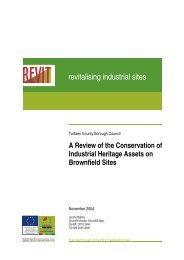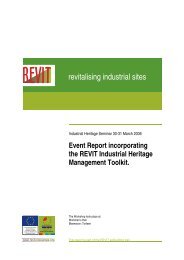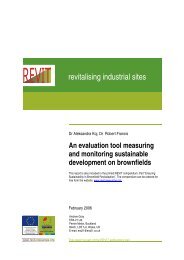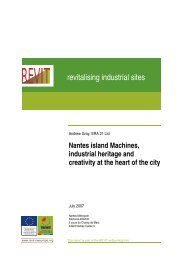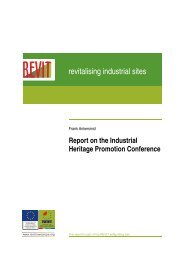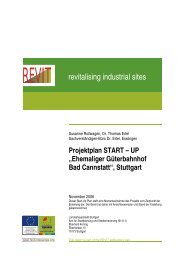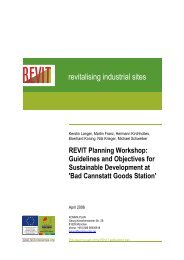STAKEHOLDER ENGAGEMENT - A TOOLKIT - REVIT
STAKEHOLDER ENGAGEMENT - A TOOLKIT - REVIT
STAKEHOLDER ENGAGEMENT - A TOOLKIT - REVIT
Create successful ePaper yourself
Turn your PDF publications into a flip-book with our unique Google optimized e-Paper software.
Review Process<br />
Rationale:<br />
The main purpose of a review is to provide those involved in the engagement process (and others)<br />
with the information to judge whether or not the process is likely to be, or has been, a success.<br />
A review is usually understood to be an evaluation (in varying detail) of something that has taken<br />
place. It should also be used, however, as an essential element of the engagement process both<br />
to evaluate the quality of an engagement plan, prior to any engagement taking place and at<br />
appropriate times throughout the process.<br />
This evaluation can be an independent process, working alongside the participatory process, or an<br />
integral part of “managing” the process.<br />
As some outcomes will be intangible (such as improved relationships<br />
or a “sense of empowerment”), it is useful to set benchmarks which<br />
1 2<br />
can be measured against. Ideally, both quantitative and qualitative<br />
techniques would have been employed in the engagement process.<br />
A robust review process can also be an effective form of risk<br />
management. This is because it helps to map out the different views<br />
held by different stakeholders at the start of a process,<br />
and provides recognition (and awareness) of<br />
the potential challenges that the engagement<br />
process may face.<br />
Inclusion of a review process can increase<br />
costs - especially if it is commissioned and<br />
managed independently of the central<br />
engagement process. This added cost may<br />
be difficult to justify when cost savings are<br />
being sought. Nonetheless, it is widely argued<br />
that a good review process is more than just a<br />
useful tool; but rather an essential criterion for<br />
the effective management of any stakeholder<br />
engagement process. This is especially true of<br />
“inherently uncertain environments” such as brownfield sites.<br />
The costs of not accounting for the risk, and being faced with things<br />
going wrong, as often happens when there is insufficient time for<br />
proper reviews as the process unfolds, are invariably far higher than<br />
the cost of ongoing review.<br />
1<br />
2<br />
Quantitative methods involve collecting numbers for measurement and judgement<br />
Qualitative methods involve collecting data from people to allow description and interpretation<br />
stakeholder engagement<br />
t o o l k i t<br />
review process



